Hyacinths: Care Guide for Flower
Hyacinths are beloved for their stunning, fragrant blooms, making them a favorite in both gardens and indoor arrangements. These spring-blooming perennials are known for their dense clusters of small, star-shaped flowers that come in a variety of colors, including blue, purple, pink, white, yellow, and even multicolored varieties. Their intense fragrance adds a delightful aroma to any space, making them a popular choice for floral displays and home décor.
Hyacinths thrive in well-draining soil with full sun to partial shade, requiring minimal maintenance. They are commonly grown from bulbs planted in the fall, blooming beautifully in early to mid-spring. In addition to garden beds, hyacinths are ideal for container gardening and forcing indoors for early blooms. Their long-lasting flowers make them a striking focal point in any landscape or floral arrangement, bringing beauty and elegance to any setting. Our gardening blog is a perfect place to find all the information you need!
Why Choose Hyacinths for Your Garden or Home?
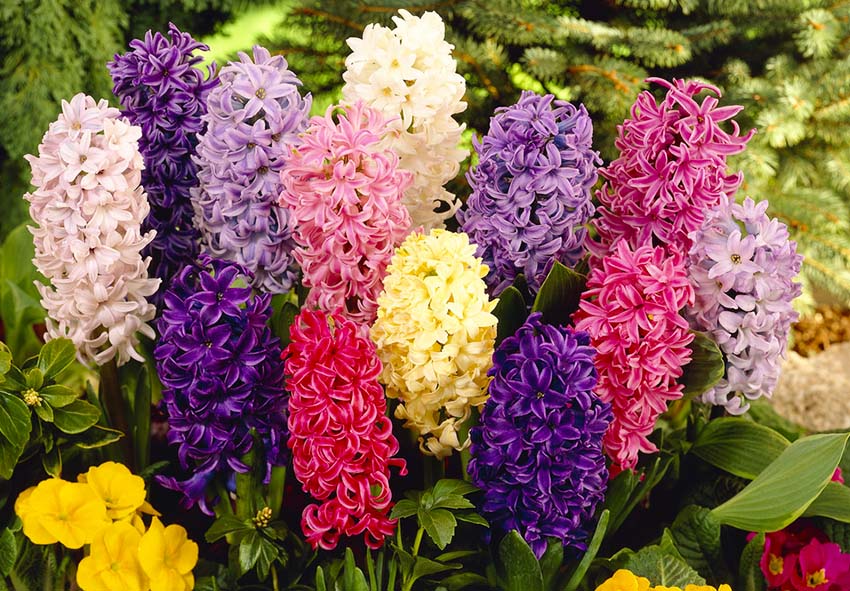
Hyacinthus are an excellent choice for any garden or home due to their vibrant colors, intoxicating fragrance, and easy-care nature. These flowers add a touch of charm to landscapes, borders, and even potted arrangements, providing a spectacular floral display each spring.
One of the most appealing aspects of hyacinthus is their rich fragrance, which can fill an entire room or outdoor space with a sweet, fresh scent. This makes them highly desirable for gardeners who enjoy sensory experiences in their landscapes. Their compact growth habit also makes them versatile for small gardens, window boxes, and indoor pots.
Hyacinths come in a range of striking colors, from deep blues and purples to soft pinks, whites, and yellows, allowing for diverse and captivating garden designs. They are also relatively low-maintenance, requiring only well-drained soil, moderate watering, and proper bulb storage for successful regrowth each year.
For those looking to enjoy hyacinths indoors, forcing bulbs in containers is a simple way to bring early spring beauty inside. Their ability to thrive both in the garden and as indoor plants makes them a favorite among plant lovers. Whether for aesthetic appeal or their delightful scent, hyacinthus are a perfect choice for any space.
The Most Popular Hyacinth Varieties and Their Characteristics
Hyacinths come in a stunning array of varieties, each offering unique characteristics in terms of color, bloom shape, and fragrance. From deep, classic blues to elegant whites and vibrant pinks, these flowers provide endless possibilities for garden design and floral arrangements.
Classic blue and purple hyacinths are among the most popular choices, known for their striking hues and intense fragrance. Varieties like ‘Delft Blue’ and ‘Blue Jacket’ produce rich, deep blue and violet tones, perfect for creating a dramatic garden display.
For a more refined and elegant touch, white and cream-colored hyacinths, such as ‘Carnegie’ and ‘White Pearl,’ offer a timeless and sophisticated appearance. These varieties are often used in wedding arrangements and minimalist garden designs.
Gardeners seeking a romantic and vibrant touch often choose pink and red hyacinths, such as ‘Jan Bos’ and ‘Pink Surprise,’ which add warmth and energy to flower beds.
Yellow and multi-colored hyacinths, including ‘City of Haarlem’ and ‘Gypsy Queen,’ bring a cheerful brightness to gardens, making them stand out in mixed-color displays.
Each of these hyacinth varieties offers its own charm and beauty, ensuring there is a perfect choice for every gardening style and preference.
Classic Blue and Purple Hyacinths
Blue and purple hyacinths are among the most popular choices, known for their rich colors and strong fragrance. These varieties create a bold and striking display in gardens and floral arrangements.
- ‘Delft Blue’ – A beloved light blue variety with soft pastel blooms and a sweet fragrance. Its delicate color blends beautifully in mixed flower beds.
- ‘Blue Jacket’ – Features deep royal blue flowers with a purple tint and an intense scent, making it perfect for dramatic garden displays.
- ‘Purple Sensation’ – This variety boasts deep violet blooms with a strong perfume, ideal for adding richness to any flower bed.
- ‘Woodstock’ – A stunning magenta-purple hyacinth with a slightly spicy fragrance, adding a unique touch to gardens.
- ‘Peter Stuyvesant’ – A rich dark-blue hyacinth with densely packed florets, offering a striking contrast in spring displays.
These blue and purple varieties are perfect for creating vibrant, eye-catching floral arrangements.
White and Cream Hyacinths for an Elegant Look
White and cream hyacinths bring an elegant and timeless charm to any garden or floral arrangement. Their soft hues complement both colorful and minimalist designs.
- ‘Carnegie’ – A classic pure white hyacinth with large, fragrant blooms, perfect for sophisticated floral displays.
- ‘White Pearl’ – Slightly creamy white flowers with a delicate, sweet scent, adding elegance to garden beds.
- ‘Aiolos’ – Known for its bright white petals and excellent fragrance, this variety is a favorite for indoor forcing.
- ‘Snow Crystal’ – A double-flowered white hyacinth with ruffled petals, giving it a lush, full appearance.
- ‘L’Innocence’ – One of the oldest white hyacinths, featuring delicate, fragrant blooms with a soft, romantic look.
White hyacinths are often used in moon gardens or wedding arrangements, enhancing their surroundings with a refined touch.
Pink and Red Hyacinths for a Romantic Garden
Pink and red hyacinths bring warmth and vibrancy to gardens, creating a cheerful and romantic atmosphere.
- ‘Jan Bos’ – A deep rose-pink hyacinth with a bold, rich fragrance, adding brightness to any garden.
- ‘Pink Surprise’ – Features soft pastel pink flowers with a delicate, sweet scent, perfect for elegant floral arrangements.
- ‘Anna Marie’ – A bright pink variety with a slightly coral undertone and a pleasant fragrance.
- ‘Fondant’ – A soft baby-pink hyacinth with long-lasting blooms, making it a great choice for borders and containers.
- ‘Hollyhock’ – A striking deep red hyacinth with double flowers, creating a rare and dramatic visual effect.
These pink and red varieties are ideal for adding warmth and a touch of romance to flower beds and bouquets.
Yellow and Multi-Colored Hyacinths
Yellow and multi-colored hyacinths provide a unique and cheerful touch to gardens, adding variety beyond the traditional blues and pinks.
- ‘City of Haarlem’ – A soft buttery-yellow hyacinth with a gentle, sweet fragrance, brightening up spring gardens.
- ‘Gypsy Queen’ – A beautiful multi-colored variety with apricot, peach, and coral tones, standing out in floral arrangements.
- ‘Yellowstone’ – A pale lemon-yellow hyacinth with a mild scent, ideal for pairing with bold-colored flowers.
- ‘Firelights’ – A stunning orange-pink variety with hints of gold, creating a unique visual appeal in gardens.
- ‘Gipsy Princess’ – A creamy yellow hyacinth with a slightly golden hue, adding warmth to garden beds.
These bright and unusual varieties bring diversity and liveliness to any garden or floral display.
How to Plant and Grow Hyacinths Successfully
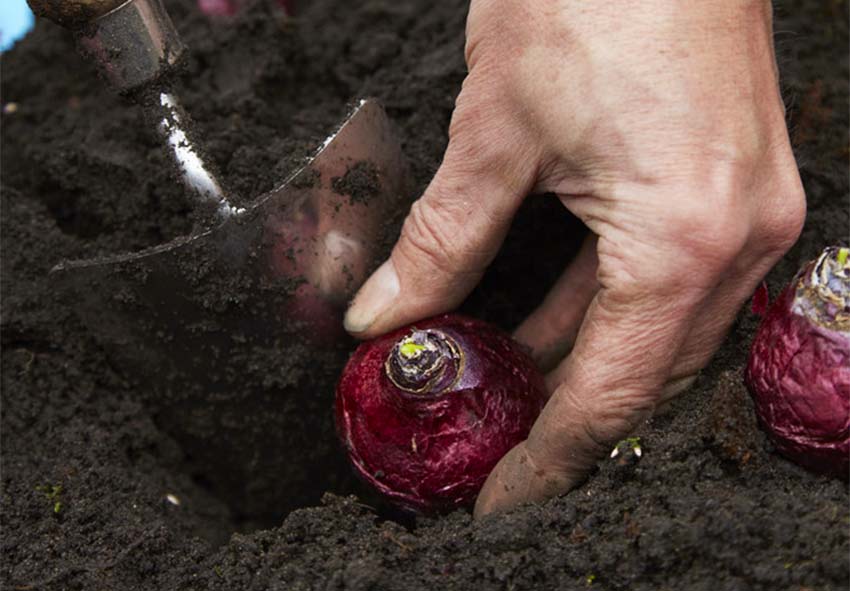
Hyacinths are a popular spring-blooming flower known for their vibrant colors and intoxicating fragrance. Proper planting and care ensure healthy growth and long-lasting blooms. Whether grown in gardens or containers, hyacinths thrive when given the right conditions.
Begin by selecting high-quality bulbs that are firm and free from damage. The planting site should have well-draining soil with a neutral to slightly acidic pH. Choose a location with full sun to partial shade for the best flowering results.
Plant hyacinth bulbs at a depth of 4-6 inches, with the pointed end facing upward. Space them 4-6 inches apart to promote good air circulation and prevent overcrowding. After planting, water thoroughly to help establish roots, but avoid waterlogging, which can cause rot.
Once the shoots emerge, provide protection from strong winds and sudden frosts. Applying a layer of mulch helps retain moisture and stabilize soil temperature. With proper care, hyacinthus will reward gardeners with stunning blooms each spring.
Step-by-Step Guide to Planting Hyacinths
Planting hyacinths correctly is essential for their success. Start by selecting firm, disease-free bulbs and choosing a well-draining planting site. Ensure proper spacing and depth, then water after planting to encourage root development. Protect young shoots from harsh weather and mulch to maintain soil conditions for optimal blooming.
Step 1: Choosing Quality Hyacinth Bulbs
Selecting the right bulbs is the first step to growing healthy hyacinthus. Choose large, firm bulbs, as they typically produce the best blooms. Bulbs should have an intact outer layer and feel solid when gently squeezed. Avoid any that have soft spots, mold, or visible signs of damage.
Dried-out or shriveled bulbs may not sprout properly, leading to weak or stunted growth. It’s best to buy bulbs from reputable suppliers to ensure they are fresh and disease-free. If purchasing bulbs early in the season, store them in a cool, dry place until planting time.
Healthy bulbs contain all the nutrients necessary for a strong start, so selecting high-quality bulbs greatly influences the overall success of your hyacinthus display. With the right choice, these fragrant flowers will bring beauty and color to your garden in early spring.
Step 2: Choosing the Right Soil and Location
Hyacinths thrive in well-draining, fertile soil that prevents excess moisture from causing bulb rot. A soil pH between 6.0 and 7.0 is ideal, as it supports nutrient absorption and promotes healthy root growth. Before planting, loosen the soil and mix in compost or organic matter to improve drainage and fertility.
The planting location should receive full sun to partial shade. Hyacinths perform best with at least six hours of sunlight daily, but they can also grow well in lightly shaded areas. Avoid locations with heavy clay or compacted soil, as poor drainage can lead to bulb decay.
For container planting, use a high-quality potting mix with good aeration. If planting in garden beds, ensure the area is free from standing water. By providing the right soil conditions and location, hyacinthus will grow strong and produce vibrant, fragrant blooms each spring.
Step 3: Proper Planting Depth and Spacing
Planting hyacinths at the correct depth is crucial for healthy growth and bloom production. Dig holes that are 4-6 inches deep, ensuring that each bulb is placed with the pointed end facing upward. A sufficient planting depth protects the bulbs from temperature fluctuations and promotes strong root development.
Proper spacing is equally important. Place bulbs 4-6 inches apart to allow for good airflow, which helps prevent disease and encourages strong, upright growth. If planting in rows or clusters, maintain consistent spacing to create a uniform and visually appealing display.
For container planting, ensure the bulbs are not overcrowded, as they still require proper spacing for healthy development. After planting, gently press the soil around the bulbs to remove air pockets. By planting at the right depth and spacing, hyacinthus will establish a strong foundation and bloom beautifully in the spring.
Step 4: Watering After Planting
Proper watering is essential for helping hyacinth bulbs establish strong roots. Immediately after planting, water the soil thoroughly to encourage root development. Moist soil ensures that the bulbs settle in well before dormancy. However, it is important to avoid overwatering, as excessive moisture can cause the bulbs to rot.
Keep the soil slightly moist throughout the growing season, but never allow it to become waterlogged. Hyacinths require moderate watering, especially during dry periods. If the soil is too dry, the bulbs may struggle to develop properly, leading to weak stems and fewer blooms.
In garden beds, well-draining soil helps regulate moisture levels naturally. For container-grown hyacinths, ensure the pots have drainage holes to prevent standing water. By maintaining the right balance of moisture, hyacinths will establish healthy roots and produce strong, fragrant flowers each spring.
Step 5: Providing the Right Growing Conditions
After planting, it’s important to provide the right conditions for hyacinths to thrive. Young shoots are vulnerable to strong winds and sudden frosts, so protect them with a layer of mulch or by placing them in a sheltered area. Mulching also helps retain soil moisture and regulate temperature.
As the bulbs begin to sprout, ensure they receive enough sunlight for optimal growth. Hyacinths prefer cooler temperatures, but they can tolerate mild warmth. However, exposure to extreme heat can shorten the blooming period.
For potted hyacinths, place them in a bright location and rotate the pots occasionally to promote even growth. If growing indoors, ensure adequate airflow to prevent mold or mildew.
With proper care and attention to their growing environment, hyacinths will reward gardeners with stunning blooms and a delightful fragrance year after year. Providing the right conditions ensures a long-lasting and healthy display of these beautiful spring flowers.
Essential Hyacinth Care Tips for Healthy Growth
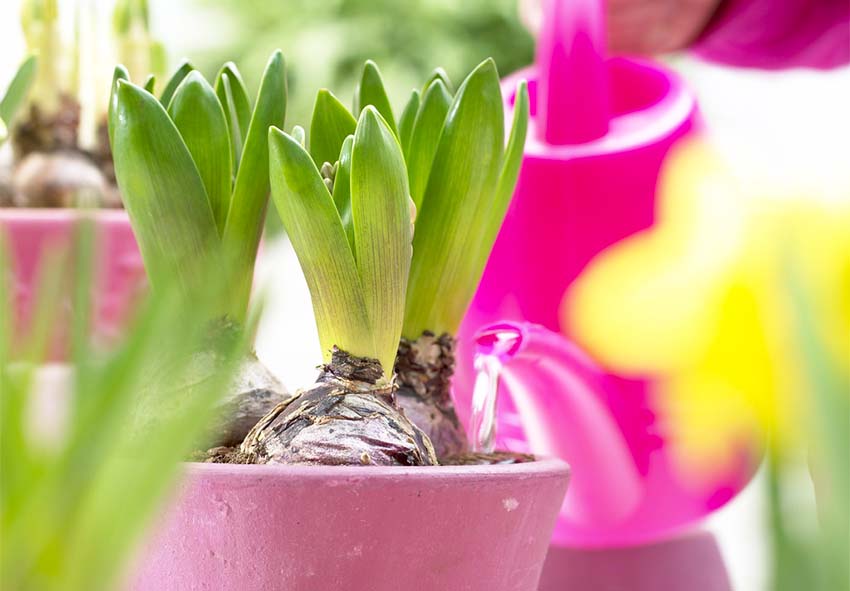
Hyacinths are resilient, low-maintenance flowers, but proper care ensures they thrive and bloom beautifully each year. Providing the right balance of water, light, temperature, and nutrients is crucial for healthy growth.
Hyacinthus require moderate but consistent watering. Keeping the soil moist, yet well-draining, prevents root rot and fungal diseases. Avoid overhead watering to minimize the risk of infections. During the active growing season, watering once a week is usually sufficient.
Fertilization supports strong blooms. A balanced 10-10-10 fertilizer applied in early spring gives the plant essential nutrients. However, fertilizing should be stopped once the blooming phase ends to allow the bulb to store energy for the next season.
Proper sunlight exposure is key to robust flowering. Hyacinths thrive in full sun but can tolerate partial shade. Protecting them from extreme temperature fluctuations, such as unexpected frosts, ensures prolonged blooming.
Since hyacinthus stems can become top-heavy, staking may be necessary to prevent bending. Deadheading spent flowers encourages the plant to focus its energy on bulb development, ensuring a strong performance in the following year. By following these essential hyacinth bulb care tips, hyacinths will continue to produce vibrant, fragrant blooms season after season.
How to Care for Hyacinths After Planting
It’s important to know how to care for hyacinths in the garden just as to learn how to care for hyacinths indoors. Once planted, hyacinths need consistent care to grow strong and healthy. Regular watering, proper fertilization, and the right light conditions help promote lush growth and long-lasting blooms. Supporting weak stems and removing spent flowers directs energy back into the bulb for future blooming. These simple steps ensure thriving hyacinths.
Step 1: Watering Hyacinths the Right Way
Watering hyacinths correctly is essential for their health and longevity. These flowers prefer consistently moist but well-draining soil. Water deeply once a week, allowing moisture to reach the roots without creating soggy conditions. Overwatering can lead to root rot, so ensure excess water drains properly.
Avoid watering hyacinths from above, as wet foliage increases the risk of fungal diseases like gray mold and rot. Instead, water at the base of the plant to keep the leaves and flowers dry. During particularly hot or dry spells, additional watering may be necessary, but always check the soil moisture first.
As hyacinths finish blooming and enter dormancy, reduce watering gradually. This allows the bulbs to store energy for the next growing season. By maintaining the right moisture balance, hyacinths will remain healthy and continue producing fragrant, vibrant flowers each spring.
Step 2: Fertilizing for Strong Growth
Fertilization plays a key role in supporting strong hyacinth growth and vibrant blooms. A balanced fertilizer with equal amounts of nitrogen, phosphorus, and potassium (10-10-10) provides essential nutrients for healthy development.
Apply fertilizer in early spring, just as the shoots begin to emerge from the soil. This ensures the plant receives the necessary nutrients to produce strong stems and abundant flowers. A second, lighter application can be made immediately after blooming to help the bulb store energy for the next season.
However, avoid over-fertilization, as excessive nitrogen can lead to weak, floppy stems. Once the plant has finished flowering, discontinue fertilization to allow the bulb to enter dormancy naturally. By using the right fertilizer at the correct time, hyacinths will develop strong roots and maintain their stunning floral display year after year.
Step 3: Providing Proper Light and Temperature
Hyacinthus require adequate light and stable temperatures to flourish. Ideally, they should receive at least six hours of direct sunlight daily. While they can tolerate partial shade, too little light may lead to weak growth and fewer flowers.
Temperature fluctuations can impact blooming. Hyacinths prefer cool to moderate temperatures and should be protected from unexpected frosts, which can damage young shoots. In regions with harsh winters, applying mulch around the base of the plant helps insulate the bulbs and regulate soil temperature.
For indoor hyacinths, place pots near a bright window to maximize light exposure. Avoid placing them near heating vents or drafty areas, as sudden temperature changes can shorten bloom duration. By ensuring proper sunlight and temperature control, hyacinths will bloom beautifully and remain healthy throughout the growing season.
Step 4: Supporting Hyacinth Stems
Hyacinth stems can become top-heavy due to their dense flower clusters, making them prone to bending or breaking. To prevent this, use small plant stakes or floral supports to keep the stems upright, especially in windy conditions.
Deadheading spent flowers is another essential practice for maintaining strong plants. Once the blooms fade, remove them to prevent the plant from putting energy into seed production. Instead, the energy is redirected into strengthening the bulb for the following season.
Avoid cutting the leaves too soon after blooming. The foliage should be left intact until it turns yellow, as it continues to absorb sunlight and nutrients needed for bulb development. By providing proper support and post-bloom care, hyacinths will remain healthy, producing strong stems and vibrant flowers year after year.
How to Encourage Your Hyacinths to Bloom Again
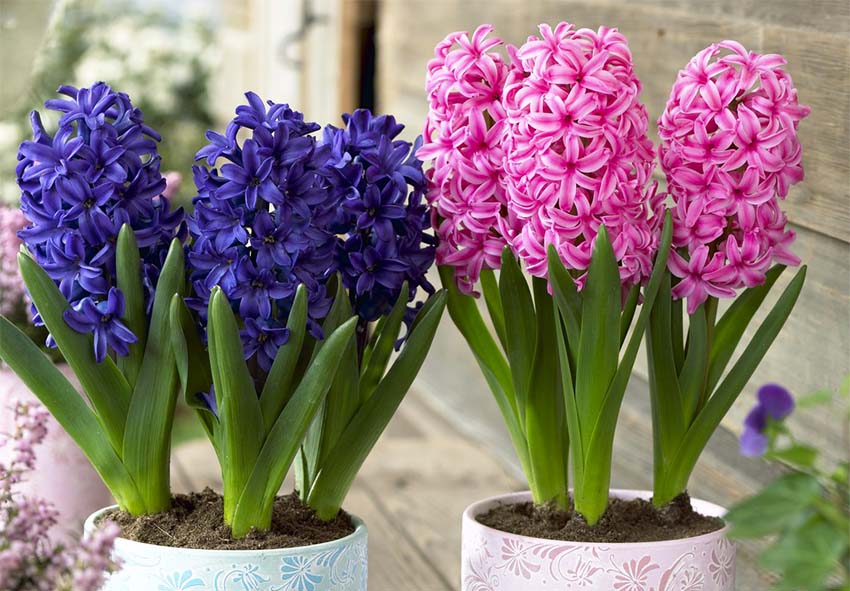
Hyacinths are beautiful and fragrant, but ensuring they rebloom each year requires proper care. Many gardeners find that their hyacinths produce fewer flowers or fail to bloom altogether after the first year. This can happen due to improper post-bloom care, lack of nutrients, or overcrowding of bulbs.
To encourage reblooming, it’s essential to deadhead spent flowers promptly. This prevents the plant from putting energy into seed production and redirects nutrients back into the bulb. However, the foliage should be left intact until it naturally dies back, as it continues to gather energy for the next growing season.
Preparing hyacinths for winter is another key step. Once the leaves turn yellow and dry out, they can be trimmed. Applying mulch over the bulbs before winter protects them from extreme cold, helping them survive dormancy.
Lastly, dividing and transplanting hyacinths every 3–5 years prevents overcrowding, which can lead to smaller flowers or weak growth. Replanting them in nutrient-rich soil allows each bulb enough space to develop properly. By following these steps, hyacinths will remain vigorous and continue to bloom beautifully year after year.
Step-by-Step Guide to Ensuring Reblooming
Getting hyacinths to bloom again requires proper post-flowering care. Deadheading spent flowers stops energy from going into seed production. Allowing the foliage to die back naturally strengthens the bulb. Preparing for winter with mulch helps protect the bulbs, while dividing and replanting them every few years ensures continuous, healthy flowering.
Step 1: Deadheading and Post-Bloom Care
After hyacinths finish blooming, it’s important to remove the faded flowers to prevent the plant from producing seeds. When energy is spent on seed formation, the bulb weakens, resulting in smaller or fewer flowers the following year. Instead, by deadheading, the nutrients are redirected back into the bulb for storage.
However, while spent blooms should be cut, the foliage must be left in place until it naturally turns yellow and dies back. The leaves continue absorbing sunlight, which provides essential energy for the next growth cycle. Cutting them too soon can reduce the plant’s ability to rebloom.
During this period, hyacinths should still receive adequate water, but it’s best to reduce watering gradually. Once the leaves have completely withered, they can be removed. Following these steps ensures the bulbs remain strong and are well-prepared for the next blooming season.
Step 2: Preparing Hyacinths for Winter
Proper winter preparation helps hyacinths survive cold temperatures and rebloom successfully in spring. Once the leaves turn yellow and dry out, the stems can be cut back. However, cutting them too early can weaken the bulbs, so it’s best to wait until the foliage has naturally died back.
Adding a layer of mulch over the planting area is crucial, especially in regions with harsh winters. A 2–3 inch layer of straw, bark mulch, or dried leaves helps insulate the bulbs and protect them from freezing temperatures. This prevents frost damage and keeps the bulbs dormant until spring.
For potted hyacinths, move the containers to a cool, dark place, such as a garage or basement, to protect them from extreme cold. Providing this winter care ensures the bulbs remain healthy and strong, increasing the likelihood of a vibrant bloom in the following season.
Step 3: Dividing and Transplanting Hyacinths
Over time, hyacinth bulbs multiply, creating clusters that become overcrowded. When bulbs are too close together, they compete for nutrients, resulting in smaller or weaker blooms. To prevent this, dividing and transplanting hyacinthus every 3–5 years helps maintain their vigor.
The best time to divide hyacinths is in early fall, after the foliage has died back. Carefully dig up the bulbs, gently separating the smaller offsets from the main bulb. Choose healthy, firm bulbs for replanting and discard any that appear damaged or shriveled.
Replant the bulbs immediately in nutrient-rich, well-draining soil. Space them about 4–6 inches apart to allow for proper airflow and root growth. Water the newly planted bulbs thoroughly to help them establish before winter dormancy. By periodically dividing and replanting, hyacinths will continue to bloom vigorously and maintain their stunning floral displays year after year.
Common Problems with Hyacinths and How to Fix Them
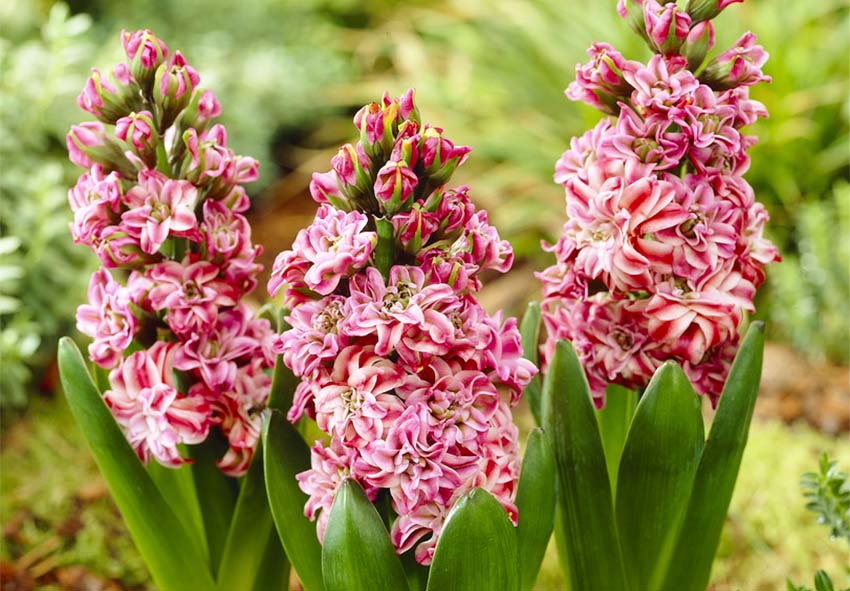
Hyacinths are generally low-maintenance flowers, but they can sometimes face common issues that affect their growth and blooming. Understanding these problems and implementing the right solutions can help keep your hyacinthus healthy and vibrant.
One of the most frequent issues is hyacinth not blooming. This can happen due to overcrowded bulbs, lack of nutrients, or insufficient sunlight. Dividing the bulbs regularly and ensuring they receive at least six hours of sunlight can promote better flowering. Applying a balanced fertilizer in early spring also helps support strong blooms.
Yellowing leaves or weak growth often result from overwatering or a lack of essential nutrients. Hyacinths prefer well-draining soil, so improving drainage and watering only when necessary can prevent root rot. A slow-release fertilizer can also provide consistent nourishment.
Another common problem is hyacinthus falling over due to their heavy blooms. Without support, the stems can become weak and bend. Using plant stakes or growing hyacinthus in dense clusters can provide the necessary support. Additionally, placing them in a sheltered location can protect them from strong winds.
By addressing these issues with proper care techniques, you can ensure your hyacinthus remain healthy and continue to produce their stunning, fragrant blooms year after year.
Troubleshooting Guide
Hyacinthus can face several common problems, including failure to bloom, yellowing leaves, and weak stems that cause them to fall over. These issues often stem from overcrowding, improper watering, or nutrient deficiencies. By dividing bulbs, improving soil conditions, and providing adequate support, you can maintain strong, vibrant hyacinth plants.
Issue 1: Hyacinths Not Blooming
Hyacinths are known for their vibrant blooms, but sometimes they fail to flower. This can be frustrating for gardeners expecting a full display of color in the spring. Several factors can contribute to a lack of blooms, but with proper care, you can restore their flowering potential.
Cause:
- Overcrowding of bulbs prevents proper growth.
- Lack of essential nutrients reduces flower production.
- Insufficient sunlight leads to weak or no blooms.
Solution:
- Divide bulbs regularly: Dig up and separate crowded bulbs every 3–5 years to allow proper spacing.
- Fertilize properly: Apply a balanced bulb fertilizer in early spring and after blooming to replenish nutrients.
- Ensure adequate sunlight: Plant hyacinths in a spot that receives at least 6 hours of direct sunlight daily.
Issue 2: Yellowing Leaves or Weak Growth
Healthy hyacinthus leaves should be green and sturdy. However, if they turn yellow or the plant appears weak, there may be underlying issues affecting its overall health. Identifying the root cause early can prevent further damage and help your hyacinths thrive.
Cause:
- Overwatering can cause root rot and weak foliage.
- Poor drainage leads to waterlogged soil, preventing proper root function.
- Nutrient deficiency weakens plant structure and leaf color.
Solution:
- Improve drainage: Use well-draining soil and avoid planting bulbs in areas prone to waterlogging.
- Adjust watering: Water only when the soil feels dry to the touch, ensuring moisture without oversaturation.
- Apply fertilizer: Use a slow-release bulb fertilizer to supply essential nutrients throughout the growing season.
Issue 3: Hyacinths Falling Over
Hyacinthus produce large, fragrant flower heads, but their heavy blooms can sometimes cause the stems to bend or fall over. This can make your garden look untidy and reduce the plant’s ability to thrive. Proper support and care can help keep hyacinthus standing tall.
Cause:
- Heavy flower heads cause weak stems to bend.
- Lack of support leads to drooping blooms.
- Poor spacing results in weak individual stems.
Solution:
- Use plant supports: Stake taller hyacinths or use plant rings to keep stems upright.
- Grow in clusters: Plant hyacinths in groups to provide natural support against falling over.
- Ensure proper nutrition: Use phosphorus-rich fertilizer to promote stronger stems and prevent excessive drooping.
Propagating Hyacinths: Growing More Beautiful Blooms
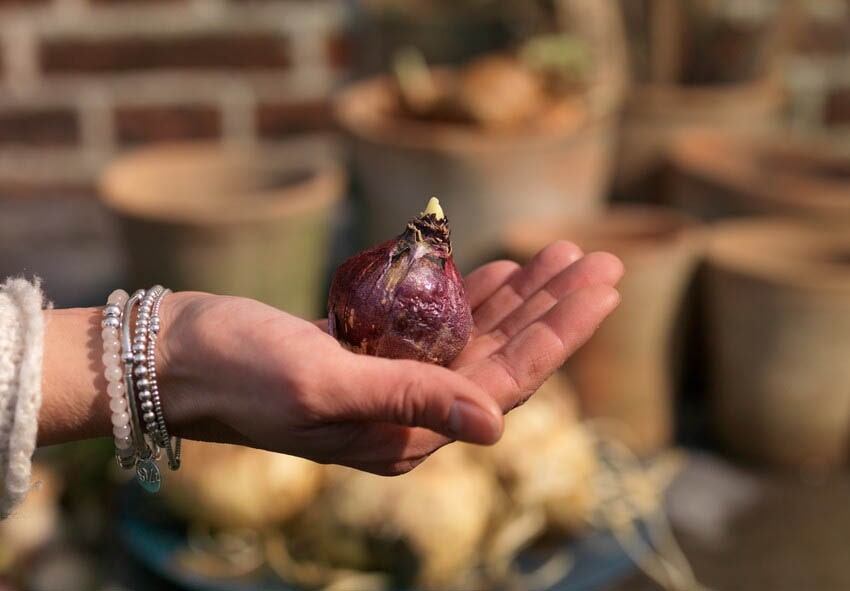
Propagating hyacinths allows gardeners to multiply their stunning, fragrant flowers and enhance their garden displays. There are two main methods for propagating hyacinths: dividing bulbs and growing from seeds. Each method has its advantages, with bulb division being the quickest and most reliable approach, while seed propagation is a slower but rewarding process.
Dividing hyacinth bulbs is the most effective way to ensure healthy, consistent blooms. Over time, hyacinth bulbs produce smaller offset bulbs that can be separated and replanted. This method ensures that new plants will closely resemble the parent plant.
Growing hyacinths from seeds is another method, though it requires patience. Hyacinths grown from seeds take several years to mature and bloom. While this approach takes longer, it allows for potential natural variations in flower color and form.
By using these propagation methods, gardeners can expand their collection of hyacinths and enjoy more beautiful blooms year after year.
How to Propagate Hyacinths Step-by-Step
There are two main ways to propagate hyacinths: dividing bulbs and growing from seeds. Dividing bulbs is the fastest and most effective method, as new plants bloom quickly. Growing from seeds takes longer, often requiring several years before flowers appear. Each method offers unique benefits for expanding a hyacinth garden.
Step 1: Dividing Hyacinth Bulbs (The Best Method)
Dividing hyacinth bulbs is the easiest and most reliable way to propagate these flowers. Over time, hyacinth bulbs produce smaller offset bulbs, which can be separated and replanted to create new plants. This method ensures that the new flowers will be identical to the parent plant.
The best time to divide hyacinth bulbs is in late summer or early fall, after the foliage has completely died back. Carefully dig up the bulbs, making sure not to damage them. Gently separate the smaller offset bulbs from the main bulb. If they are still tightly attached, they can be left to grow for another year before separation.
Replant the divided bulbs immediately in well-draining soil, spacing them about 4–6 inches apart. Water thoroughly after planting to help the bulbs establish roots before winter. This method guarantees healthy, vibrant blooms in the following spring.
Step 2: Growing Hyacinths from Seeds
Growing hyacinths from seeds is a longer process but can be an exciting way to experiment with new variations of the flower. Unlike bulb division, seed-grown hyacinths may take 2–5 years to mature and bloom, making this method more suitable for patient gardeners.
To propagate hyacinths from seeds, collect mature seed pods in the fall after they have dried on the plant. Gently break open the pods and remove the seeds. Sow them in a tray filled with well-draining, nutrient-rich soil. Place the tray in a warm, well-lit area, ensuring the soil stays moist but not waterlogged.
Once the seedlings develop strong roots, they can be transplanted into individual pots or directly into the garden. Though it takes several years for the plants to flower, this method can produce unique hyacinths with subtle variations in color and form, adding diversity to any garden.
Frequently Asked Questions (FAQs) about Hyacinths
1. How do I plant hyacinth bulbs for the best blooms?
Plant hyacinth bulbs in fall, about 4 to 6 inches deep and spaced 3 to 5 inches apart. Choose well-draining soil and a sunny spot. For indoor forcing, chill the bulbs for 10–12 weeks in a cool, dark place before placing them in a bright, warm area to bloom.
2. How often should I water my hyacinths?
Hyacinths prefer consistently moist—but not soggy—soil. Water them when the top inch of soil feels dry. Avoid overwatering, especially during bulb dormancy. For indoor plants, ensure pots have drainage holes, and never let them sit in water to prevent bulb rot.
3. Can hyacinths bloom again next year?
Yes, hyacinths can bloom again outdoors with proper care. After flowering, let the foliage die back naturally to nourish the bulb. Once the leaves are yellow, trim them off. Fertilize in fall and replant in well-drained soil. Indoor-forced bulbs often don’t rebloom well but can be transplanted outside.
4. Can I order hyacinth bulbs from your online store?
We’re pleased to offer hyacinth for purchase through our online store Dutch-bulbs.com. Ordering from us is convenient, and we ensure that you receive high-quality, healthy tubers. Simply browse our store, choose your favorite hyacinth varieties, and follow the easy ordering process to have them delivered to your doorstep, ready for planting.
5. Are hyacinths toxic to pets?
Yes, hyacinths are toxic to cats and dogs, especially the bulbs. Ingestion can cause vomiting, drooling, and stomach upset. Always keep bulbs and plants out of reach of pets, and wash your hands after handling bulbs, as they may also irritate human skin.
Published: 20.03.2025
